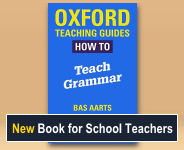Adjectives: Avoiding adjective overuse
Many writers of fiction use adjectives as a quick way of telling us what a character is like: how they appear, how they feel, how we should view them. Look at the following examples of how adjectives are used to provide a basic description:
- Martina was angry.
- Kyle was sad.
- Derrick was so much smaller than Stanley.
- He wasn’t entirely sure.
- When she saw what was inside the envelope, Lucy was delighted.
Some writers prefer to use a different technique when they write. Instead of telling the reader what a character looks like, how they feel or what they are like as a person, they show the reader what the character is doing or feeling, by describing the actions of the character and letting us draw our own conclusions from this.
For instance, instead of our first example, Martina was angry, another writer might say:
- Martina’s face started to turn from smile to frown and she slammed her fist down on the counter of the shop.
We can see she is angry here without being told that she is. Showing the reader is often a good way of letting the reader experience the action in more detail. It also uses different word classes, not relying on adjectives to do all the work for us.
Welcome!

Englicious is totally free for everyone to use!
But in exchange, we ask that you register for an account on our site.
If you’ve already registered, you can log in straight away.
Since this is your first visit today, you can see this page by clicking the button below.
- Printer-friendly version
- Log in to view or leave comments

